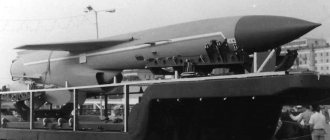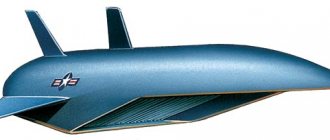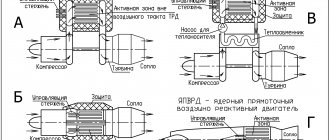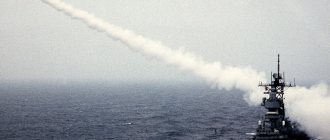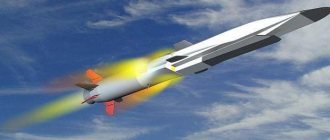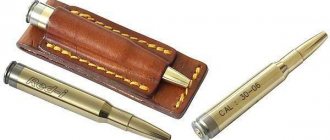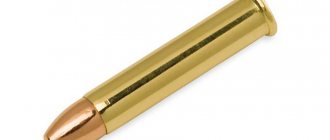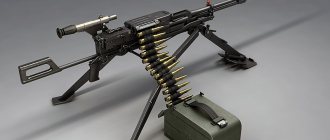Accustomed to loud advertising names, who were short-lived and unsuccessful partners, military personnel from overseas, followed by NATO, which unquestioningly listens to them, call this weapon the “Incinerator.” The Caliber cruise missile, the characteristics of which evoke a variety of emotions from complete admiration to nightmarish horror, depending on which side (possible start or potential “finish”) the inquisitive reader is on, I must admit, deserves this name.
A whole range of cruise missiles, which are in service with all branches of the Russian army, as well as those supplied for export in a simplified version, including the Caliber complex, are designed and produced by the Novator Design Bureau, located in Yekaterinburg. After its successful use in control centers, camps, weapons and ammunition depots of religious militants in Syria, the whole world learned about the products of modern Ural craftsmen.
The “Caliber” of the Russian Navy is heading for a local war
A Unified Day of Acceptance of Military Products was held at the National Defense Management Center of the country. As Defense Minister Sergei Shoigu noted at the meeting, over 600 new and 300 repaired weapons, military and special equipment were delivered to the troops in the second quarter of this year. These include a brigade set of the Iskander-M OTRK, 11 airplanes and 6 helicopters, the Sovershenny multi-purpose patrol ship, and 60 Caliber sea-launched cruise missiles (SLCMs).
The delivery of the Kalibr SLCM to the fleet deserves special attention. The widely publicized launches of these advanced Russian cruise missiles against targets in Syria have generated increased interest around the world. Mainly because it became obvious: for the first time, the Russian Navy received a high-precision instrument for effective non-nuclear deterrence, an analogue of the famous American Tomahawks. It is not surprising that domestic naval commanders are now trying en masse, as the famous military expert Alexander Mozgovoy , to “calibrate” the domestic Navy. That is, to equip almost all warships under construction and undergoing deep modernization with such weapons.
Project 21631 Buyan-M small missile ships are already receiving or will soon receive Caliber missiles, of which the Ministry of Defense plans to have at least 10 units. Also - small missile ships of Project 22800 "Karakurt" (18 units planned). Each such ship is equipped with a universal launcher for 8 missiles.
Precision weapons
Starting with the brazen, unjustified bombing of the Serbian capital Belgrade, the United States, and also inspired by both American power and the impunity of NATO allies, overseas aggressors began to often use so-called high-precision weapons for the purpose of intimidation. These were bombs with laser-guided systems and cruise missiles, previously intended only to deliver nuclear weapons to the enemy or as an effective means of intercepting strategic counterparts in air defense and missile defense systems.
For many years, the Anglo-Saxon world, through the media, convinced that only a select few - the United States and its loyal vassals - could have such a high-tech, smart, and at the same time very expensive weapon. Considering that it is historically not customary in Russia to widely and intrusively advertise, and even more so to use against dissidents, the products of the military-industrial complex. It seemed that there were either not so many such powerful selective weapons in the troops, or they were not really needed, being compensated by other missile systems for delivering “heat and light” to any point on the planet.
History of creation
The R-36M heavy-class intercontinental ballistic missile was developed at the Yuzhnoye Design Bureau (Dnepropetrovsk). On September 2, 1969, a resolution was adopted by the Council of Ministers of the USSR on the creation of the R-36M missile system. The rocket had to have high speed, power and other high characteristics. The designers completed the preliminary design in December 1969. The intercontinental nuclear ballistic missile provided for 4 types of combat equipment - with multiple, maneuvering and monoblock warheads.
Yuzhnoye Design Bureau after the death of the famous M.K. Yangel was headed by Academician V.F. Utkin. When creating a new missile, designated R-36M, we used all the experience accumulated by the team when creating previous missile models. In general, it was a new missile system with unique performance characteristics, and not a modification of the R-36. The development of the R-36M proceeded in parallel with the design of other third-generation missiles, the general characteristics of which were:
- use of MIRVs;
- use of an autonomous control system with an onboard computer;
- placement of a command post and missiles in highly secure structures;
- the possibility of remote re-aiming immediately before launch;
- availability of more advanced means of overcoming missile defense;
- high combat readiness, ensuring quick launch;
- use of a more advanced management system;
- increased survivability of complexes;
- increased radius of destruction of objects;
- increased combat effectiveness characteristics provided by increased power, speed and accuracy of missiles.
- the radius of the R-36M damage zone with a blocking nuclear explosion is reduced by 20 times compared to the 15A18 missile, resistance to gamma-neutron radiation is increased by 100 times, resistance to x-ray radiation is increased by 10 times.
The R-36M intercontinental nuclear ballistic missile was first launched from the Baikonur test site on February 21, 1973. Tests of the missile system were completed only by October 1975. In 1974, the first missile regiment was deployed in the city of Dombarovsky.
Sarmat missile: plans, activities and delays
A bit of reality. This is not the first time during legal proceedings that details have been revealed about the progress of R&D efforts to create advanced weapons. Cases No. A56-8333/2020 and A56-46672/2021 indicate one of the reasons for postponing the flight tests of the 15A28 missile of the Sarmat missile system, also referred to under the codes “product 001” and “topic 001”. Let us remind you that despite numerous statements by the highest officials, flight tests of this complex have not yet begun. The backwardness of the domestic element base and Western sanctions were blamed. From the case materials it follows that the developer of the Sarmat control system is JSC NPO Automation named after Academician N.A. Semikhatov" (hereinafter NPOA). In turn, NPOA ordered the Scientific Research Institute of Command Instruments JSC (hereinafter referred to as SRI KP) to carry out design and development work for the manufacture of a complex of command instruments (KKP) and a block of angular velocity sensors (BDUS), for which the parties entered into agreement No. 2/2-1030 -15/787/Yur.765 dated 02/06/2015.
This agreement is divided into 12 stages, stages Nos. 1,3,5,7,9,11 provide for the production and delivery of PCC; No. 2,4,6,8,10,12 - production and supply of BDUS. Thus, the KP Research Institute was supposed to manufacture and supply 6 sets of KKP and BDUS for missiles for flight testing (LI products). Some initial deadlines are mentioned: for stage 5 – 12/31/2016; for stage 6 – December 31, 2016; for stage 7 - 03/31/2017; for stage 8 - 03/31/2017; for stage 9 - 06/30/2017; for stage 10 - 06/30/2017.
The original deadlines for the completion of stages were repeatedly missed and postponed by additional agreements to the contract. Thus, by additional agreement No. 14 dated April 24, 2019, the deadline for the 5th stage was postponed to August 2022, the deadline for the 6th stage was postponed to September 2022, and these deadlines were also missed - the shipment of the KKP for the 5th stage took place on November 16, 2019, but the KKP was delivered did not pass the entrance control at the NPOA and was not accepted by it. The cases mention many letters, research reports and conclusions about the need to refine and restore the CCP. As a result, the Scientific Research Institute of KP fulfilled its obligations for stage 5 only on 04/12/2020, and the deadline for stage 6 was once again postponed by additional agreement No. 18 dated 02/03/2020, now until 02/26/2020, by the same agreement the deadline for stage 11 was postponed until 11/15/2020.
At the time of the trial, the Research Institute of KP had manufactured 3 sets of command devices to complete LI products No. 1,2,3 (stages No. 6,7,8) and a reserve had been formed for LI products No. 4,5,6 (stages No. 9,10,11 ). As one of the reasons for the postponement, the Research Institute of KP refers to the fact that when testing electronic products after the development of design documentation, it became necessary to purchase additional elements of the electronic database (i.e., it was necessary to replace some of the elements - note channel). Considering the lack of competition in the market for these elements (including due to the sanctions imposed on the Russian Federation), their acquisition required significant time expenditure, which ultimately led to a delay in the execution of work. Due to the unsatisfactory progress of work, the parties agreed on a joint decision on 06/09/2020: “During the development of the complex of command devices KPP INAYA.402113.130 according to the technical specifications for the SCh OKR “Development of a complex of command devices for control system equipment on topic “001”, accuracy characteristics with deviations were achieved from individual requirements of the technical specifications for a set of command devices. Deviations of the achieved characteristics from the requirements of the technical specifications for the complex of command devices are due to the lack of domestic element base with the necessary characteristics. Bringing the specified characteristics to those specified in the terms of reference for the development of a set of command devices is possible subject to the development and implementation of an improved domestic element base no earlier than 2022.” - in other words, if the improvement of the domestic element base does not happen, then the characteristics of the CCP will not be brought to the levels specified in the original technical specifications either in 2022 or later.
By the same decision, the parties established a number of measures and joint actions to complete the work as quickly as possible: “1. Allow the complex of command devices with the achieved characteristics to GLI 1-3 for which JSC "GRC Makeeva", JSC "NPO Automation", JSC "Research Institute of Command Devices" adjust the terms of reference for the complex of command devices and the corresponding documentation. 2. JSC "Research Institute of Command Devices" to develop and coordinate with JSC "NPO Automation", JSC "GRTs Makeev", Federal State Budgetary Institution "4TsNII" MO and DOGOZ a schedule for the implementation of a complex of command devices to the level specified in the terms of reference for the development of the control panel. 3. JSC "NPO Automation", JSC "GRC Makeev", JSC "Research Institute of Command Devices" together with the Federal State Budgetary Institution "4TsNII" MO and DOGOZ make a separate decision on finalizing the complex of command devices and the necessary methods in terms of confirming the main characteristics based on the results of the implementation of paragraph. 2 of this solution and the results of GLI 1-3. 4. Work according to this decision should be carried out without increasing the cost of development work.”
Further, JSC “GRC Makeeva”, the main executor of the state contract for “Sarmat”, sends the Research Institute of KP letter No. 147/1131 dated 04/26/2021 with an attachment in the form of a decision on the procedure for ground-based experimental testing of the on-board equipment of the control system. In accordance with this decision, the products supplied under the contract are approved for flight testing, taking into account the achieved characteristics (i.e., with a control unit that does not fully meet the initial requirements of the technical specifications - channel note). For this reason, the position of the Research Institute of KP is as follows: it is not possible to carry out work under stage 11 of the contract before the completion of flight tests. Moreover, according to the additional agreement No. 30 dated 08/13/2021 concluded by the parties, work on stages No. 9 and No. 10 are excluded from the work under contract No. 1118187311572010101000282/2/2-1030-15/787/jur.765 dated 02/06/2015 and included in the scope of work under contract No. 1118187311572010101000282/24/2-1030-21/785/jur.2051 dated 08/13/2021 under stages No. 1 and No. 2.
Not soon there will be Sarmatian...
Design Features
- The R-36M is a two-stage missile using sequential stage separation. The fuel and oxidizer tanks are separated by a combined intermediate bottom. The onboard cable network and pipelines of the pneumohydraulic system, which are covered with a casing, run along the body. The 1st stage engine has 4 autonomous single-chamber liquid propellant engines, which have a turbopump fuel supply in a closed circuit; they are hinged at the rear of the stage on the frame. Deflection of the engines at the command of the control system allows you to control the flight of the rocket. The 2nd stage engine includes a single-chamber propulsion engine and a four-chamber steering rocket engine.
- All engines run on nitrogen tetroxide and UDMH. The R-36M implements many original technical solutions, for example, chemical pressurization of tanks, braking of the separated stage using the exhaust of boost gases, and the like. The R-36M is equipped with an inertial control system, which operates thanks to an on-board digital computer complex. Its use allows for high shooting accuracy.
- The designers provided for the possibility of launching the R-36M2 even after an enemy nuclear strike on the area where the missiles are located. "Satan" has a dark heat-protective coating that facilitates passage through the radiation dust cloud that appears after a nuclear explosion. Special sensors that measure gamma and neutron radiation during the passage of the nuclear “mushroom” register it and turn off the control system, but the engines continue to operate. After leaving the danger zone, the automation turns on the control system and corrects the flight path. ICBMs of this type had particularly powerful combat equipment. There were two variants of the warhead: MIRV IN with eight warheads (900kt each) and a monoblock thermonuclear one (24Mt). There was also a complex for overcoming missile defense systems.
Video about the Satan rocket
Quantity and cost
Missiles of this type are the most powerful of existing intercontinental missiles; they are capable of delivering a crushing nuclear strike to the enemy. In the West, these rockets are called “Satan”.
As of 2022, the Russian Strategic Missile Forces have 75 combat missile systems equipped with Satan missiles (750 nuclear warheads in total). This amounts to almost half of Russia's nuclear potential, which totals 1,677 warheads. By the end of 2022, most likely, some more Satan missiles will be removed from Russia’s arsenal and replaced with more modern missiles.
